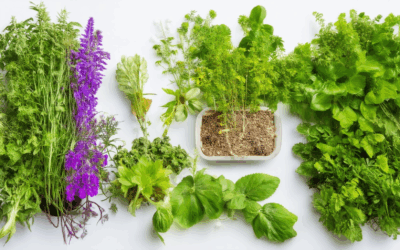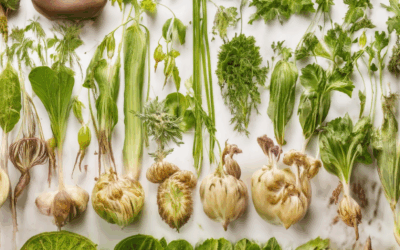Creating a garden that thrives with biodiversity is a simple yet powerful way to contribute to conservation efforts, benefiting both your surroundings and the wider ecosystem. By thoughtfully designing and maintaining your outdoor space, you can create a haven for pollinators, birds, and other wildlife, fostering a richer, healthier environment. Whether through planting native species like wildflowers and grasses or incorporating water features, each element plays a vital role in supporting biodiversity. This guide explores practical strategies to enhance your garden’s biodiversity, offering insights into how small actions can have a big impact on local and global conservation efforts. Let’s delve into the transformative potential of your garden and discover how it can become a thriving hub of ecological activity.
How to Create Biodiversity in a Garden
To enhance biodiversity in your garden, follow these organized steps:
- Plant Diverse Vegetation :
- Incorporate a variety of plants, including native species tailored to your region for optimal local support.
- Mix annuals with perennials to extend blooming seasons and provide continuous pollen sources for pollinators.
- Support Pollinators :
- Plant flowers that bloom at different times to ensure a steady food supply for bees, butterflies, and other pollinators.
- Consider heirloom varieties known for their resilience and ability to attract pollinators.
- Create Wildlife Habitats :
- Install bird feeders or nesting boxes to attract birds.
- Add butterfly houses or insect hotels to support specific species.
- Introduce water features like ponds or birdbaths to draw in various creatures.
- Enhance Soil Health :
- Practice composting to enrich soil and promote microbial activity.
- Grow cover crops (e.g., clover, vetch) to protect soil during winter and encourage earthworms.
- Design for Multiple Habitats :
- Include both sunny and shaded areas, along with open spaces and dense plantings, to create varied microhabitats.
- Leave deadwood or logs in the garden to provide shelter for insects and small animals.
- Adopt Permaculture Principles :
- Design your garden to mimic natural ecosystems, supporting multiple layers of plants and encouraging self-sufficiency.
- Implement Water-Wise Practices :
- Use native plants that are drought-tolerant.
- Install drip irrigation for efficient water delivery.
- Consider rainwater harvesting systems to minimize water usage.
- Maintain Buffer Zones :
- Preserve natural areas around your garden to create wildlife corridors, allowing animals safe passage and movement.
By thoughtfully applying these strategies, you can create a thriving garden ecosystem that supports a variety of species, contributing to overall biodiversity.
What is a Botanical Garden?
A botanical garden is a controlled environment where plants are cultivated, studied, and displayed for scientific research, conservation, and public education. These spaces often house rare, endangered, or unique plant species and serve as hubs for horticultural innovation.
How Can Botanical Gardens Be Used for Conservation Purposes?
Botanical gardens play a vital role in plant conservation by:
- Storing Rare and Endangered Species: Many botanical gardens maintain collections of rare or threatened plant species, contributing to ex situ conservation efforts.
- Breeding and Propagating Plants: Experts in botany and horticulture work on breeding programs to ensure the survival of certain species, aiding in genetic diversity and population recovery.
- Research and Study: Gardens facilitate scientific research on plant biology, genetics, and ecological interactions, leading to advancements in conservation strategies.
- Collaboration with Other Organizations: Botanical gardens often partner with universities, NGOs, and wildlife agencies to share knowledge and resources for global biodiversity protection.
- Reintroduction Programs: Some gardens participate in reintroduction efforts, helping to restore species to their natural habitats through carefully planned releases.
- Ecosystem Restoration: By recreating natural habitats, botanical gardens contribute to ecosystem restoration, supporting pollinators and maintaining biodiversity.
These efforts highlight the importance of botanical gardens in preserving plant diversity and supporting sustainable practices, aligning with goals like those promoted by Old Seed in fostering environmental stewardship.
How Does Planting Help Biodiversity?
Planting plays a vital role in supporting biodiversity, contributing to the health and sustainability of ecosystems. Here’s how planting impacts biodiversity:
- Habitat Restoration: Planting trees and native vegetation restores degraded environments, providing shelter and food for wildlife. Forests, gardens, and green spaces act as corridors, enabling animals to move safely between habitats.
- Supporting Pollinators: Plants like wildflowers and bees play a crucial role in pollination. By planting diverse native flowers, you create essential habitats for pollinators, which are vital for ecosystem functioning.
- Carbon Sequestration: Trees and plants absorb CO2, helping combat climate change. This process also improves air quality and reduces greenhouse gases, benefiting both flora and fauna.
- Water Retention and Purification: Vegetation stabilizes soil, reducing erosion and filtering pollutants. Native plants are particularly effective at capturing and purifying water, supporting aquatic life.
- Genetic Diversity: Planting a variety of species ensures genetic diversity, making ecosystems more resilient to stressors like disease or environmental changes.
By planting thoughtfully, you contribute to a thriving environment that supports countless species. Explore our Native Plants Guide to learn more about selecting the right plants for your area.
How Do Community Gardens Improve Biodiversity?
Community gardens play a vital role in enhancing biodiversity within urban environments. By creating green spaces, they provide habitats for a variety of plants, insects, birds, and small animals, helping to restore and maintain ecological balance.
- Supporting Pollinators: Community gardens often include flower beds that attract pollinators like bees and butterflies. These pollinators are essential for the reproduction of many plants and contribute to ecosystem health.
- Native Plant Species: Planting native vegetation in community gardens promotes biodiversity by providing food and shelter for local wildlife. Native plants are adapted to the local environment and require less maintenance, making them ideal for urban green spaces.
- Wildlife Corridors: Gardens can act as corridors connecting fragmented habitats, allowing animals to move safely between different parts of the city. This connectivity supports gene flow and maintains diverse populations.
- Green Spaces Reduction: Community gardens help mitigate the heat island effect by providing cooler microclimates. They also serve as refuges for urban wildlife, offering shade and protection during extreme temperatures.
Additionally, community gardens contribute to local food production, promoting food security and reducing the environmental impact of industrial agriculture. By fostering a connection between people and nature, they inspire stewardship and encourage sustainable practices that benefit both human communities and local ecosystems.
For more information on how to get started with heirloom gardening and sustainable practices, visit our gardening resources page. Learn about traditional methods, seed preservation, and how to create thriving urban gardens.
How to Grow a Diverse Garden
To create a thriving, diverse garden, consider the following steps:
- Select the Right Plants: Start by choosing plants that suit your climate and soil type. Mix in heirloom varieties for genetic diversity and native plants to support local wildlife. Add pollinator-attracting flowers like sunflowers and lavender.
- Prepare the Soil: Test your soil pH levels and amend with compost or organic matter. This ensures healthy plant growth and promotes biodiversity.
- Water Efficiently: Use drip irrigation systems and collect rainwater to minimize water usage. This helps conserve resources and supports sustainable practices.
- Practice Companion Planting: Grow plants that benefit each other, such as marigolds to deter pests and legumes to fix nitrogen in the soil.
- Support Pollinators: Incorporate flowers that attract bees, butterflies, and other pollinators. This boosts ecosystem health and ensures successful plant reproduction.
- Plan for Seasonal Rotation: Rotate crops annually to maintain soil fertility and reduce disease risks. Introduce succession planting to maximize space and variety.
- Manage Pest Populations: Use natural predators like ladybugs and introduce beneficial insects. Practice crop rotation to disrupt pest cycles.
- Diversify Edible Plants: Include a variety of vegetables, herbs, fruits, and nuts. Try different species to explore flavors and nutritional benefits.
By following these tips, you can create a garden that thrives with biodiversity, supporting both environmental health and culinary interests. Explore heirloom seeds and learn more about sustainable gardening practices to further enhance your efforts.
Biodiversity and Soil Quality
Biodiversity plays a crucial role in enhancing soil quality, supporting ecosystem functions, and ensuring long-term agricultural productivity. A diverse ecosystem, including plants, beneficial insects, and microorganisms, creates a balanced environment that promotes healthy soils.
- Diverse plant species enhance soil structure by preventing erosion and increasing water infiltration.
- Plant roots improve soil aeration and promote nutrient cycling, contributing to better root development in adjacent plants.
- Beneficial insects and organisms like earthworms aid in breaking down organic matter, enriching the soil with nutrients and improving its fertility.
- Greater biodiversity reduces soil compaction and enhances microbial activity, leading to better nutrient availability and reduced soil degradation.
- Species with nitrogen-fixing abilities, such as legumes, improve soil fertility by converting atmospheric nitrogen into a form usable by plants.
By fostering biodiversity, we support a healthier soil environment that promotes sustainable farming practices and ensures the resilience of ecosystems against environmental challenges. This balance is essential for maintaining productive agricultural lands and preserving the integrity of natural habitats.
For more insights into sustainable gardening and biodiversity, visit our website and explore our comprehensive guides on eco-friendly practices.








0 Comments